In my ongoing series of crossing World Borders, I bring you expert first hand advice on how to get yourself across the same borders that I have ventured across myself. My most recent border crossing this week was from Brazil to French Guyana. On my first trip to South America in 2010 I had went backpacking in Suriname and Brazil. But there were two countries on the north of the continent that I didn’t make it to – French Guyana and Guyana and I’m hoping to get to them both on this current trip in my quest to knock off a century of countries before I turn 35!
This guide should tell you how to get from Brazil to French Guyana, but please bear in mind that this type of travel is not really on the “normal backpacker circuit.” Apart from Brazilians and French, we’re the only tourists we’ve seen in the last 5 towns we’ve been in here. You will rarely encounter any other tourists doing this route and this route has not been covered in detail on many travel sites, never mind blogs. Which is why it’s time to give a detailed account of the trip to French Guyana, so other travellers can follow the route we took. It’s a route worth taking!
Stay in Macapa, Brazil
OK, so if you are keen to go overland to French Guyana, I recommend to start off in Macapa in Brazil. This should be your starting point not just for the border but because of what Macapa offers. Macapa sits at the entrance to the Amazon Basin and houses 500,000 people. We quite liked backpacking in Macapa, as it has the quirkiness of being a city which straddles the equator, so you can get your photos taken by the Equator marker while you’re there. Macapa is about 600 kilometres from French Guyana and is the nearest large Brazilian city to French Guyana.
Terminal Rodoviario, Macapa, Brazil
When you’re ready to leave Macapa and head towards French Guyana, go to the Terminal Rodoviario. This can be reached by local bus if you’re really skint and have time, but we were rushed for time and it was during the World Cup, so we got a taxi to the station (so I could watch the first half of Switzerland v. France!). Local buses are 2 Reals and easy enough to use (get on at the back, pay and go through the turnstiles). Taxis start at 5 Reals, but expect to pay more than 20 from the Centre of Macapa to Terminal Rodoviario but bargain down. Terminal Rodoviario is situated in the South East of the city and is in an area known as Sao Lazaro.
Macapa to Oiapoque
From Terminal Rodoviario in Macapa, you need to head north west to the town of Oiapoque. In the bus terminal you will see some bus ticket counters with Oiapoque buses available. The first rule is to look around and get the prices from each one, then pick the one that suits you best, rather than rush into the first bus you see. This is not a popular backpacking route and buses are not needed to be booked in advance. In fact, I’m not even sure advance booking would be possible. Turn up and go is the norm here.
What time to get to Terminal Rodoviario?
We arrived around 5pm as we had expected there to be buses at 5pm, 6pm and 7pm from this terminal in Macapa all the way to Oiapoque. However on arrival at the terminal one of the desks had a sign up saying Oiapoque 23.00 (i.e. 11pm). We had arrived on a holiday and the schedule had changed which meant there was only one bus to Oiapoque and it would leave at 11pm. That meant a wait of over 5 hours. The bus price was 92 Reals. But we didn’t book it, or want to wait over 5 hours even though there was the rest of France v. Switzerland and the whole of Ecuador v. Honduras to watch.
We looked around the station and the other bus companies were not offering any alternative times for Oiapoque buses, so we looked at the other option: sharing a lift in a Toyota Hilux. Now this option is the more expensive one, but easily the most comfortable, safest and most reliable so we plumped for it in the end.
To find a driver with a Hilux, walk back outside the bus station and ask people. They all speak Portuguese and not much English, but you can get by, knowing French or Spanish also helps (at times it felt like I was mixing 4 languages together to be understood). The Toyota Hilux can deal with the terrain all the way to Oiapoque even in wet conditions and get you there no problem. After trying to bargain down, we find that the driver of the one and only Hilux in the bus station at that time will not budge below 150 Reals per person. Ouch! But we are tired, it’s about to get dark and we know we can easily make breakfast in Oiapoque with this option and get some sleep on the way, so we take it.
So in short, you have 2 options (without hitch-hiking) to get from Macapa to Oiapoque:
1. Get a night bus, which leaves normally at 5pm, 6pm, 7pm (with sometimes cancellations/delays) and costs 92 Reals per person.
2. Share a nightride on a Toyota Hilux (Jeep) which leaves when full, or when the driver wants to and costs 150 Reals per person. If your Hilux is full, bargain down to 120 Reals if you take the middle seat, which has less leg room.
Leaving Macapa
Just before sunset we left Macapa. Our driver in the front with my girlfriend Panny in the passenger seat. Me in the back with Manuel from Brazil beside me. At one point the drivers daughter joined us in Macapa as the driver gave her a lift from school back to her home. We got to see a bit of the local estate they live in. By 6.30 pm we had left Macapa behind completely.
The Journey from Macapa to Oiapoque
The trip we did was at night, so obviously you don’t really see much out the window – we took advantage and grabbed a bit of sleep, though believe me that is very difficult. The roads are not great, very bumpy and rocky in parts and if you’re not used to hardcore backpacking you might even get upset by it. We were fine with it – at least 5-6 hours of the 12 hour jeep ride was up and down bumpy terrain, on a muddy rocky surface.
We had 2 food stops early on, at around 8pm, when we stopped at a restaurant and I caught a bit of the Ecuador v. Honduras World Cup match. A lady had joined us for this part of the journey.
Then we had another food stop just before midnight, which I reckon was in the city of Porto Grande. After that the terrain got worse and it was muddy, rocky and bumpy.
There was also one moment when we saw another jeep which had some stuff fall off it. We pulled over for 20 – 25 minutes to help them sort it out. The road continued to be rocky and just after dawn, as the sun had come up we arrived in the town of Oiapoque. It was around 6.35 am when we got there, so the entire journey including all stops had been around 13 hours.
Arrival into Oiapoque, Brazil
Oiapoque is a small town which sits on the Amazon Basin opposite French Guyana. We arrived around 6.35 am and there is no real benefit of arriving earlier, for two reasons:
1. It’s dark and there’s nowhere to go and nothing to do.
2. The Immigration Office doesn’t open until 8am anyway.
Breakfast in Oiapoque
Our driver dropped us at the Immigration Building, the Federal Police Building (Policia Federal) to show us where it was. Just opposite was a small corner cafe/bakery so we decided to wait there and have breakfast – a cup of coffee and the food we had brought with us. This breakfast place was called Ki-Sabor: Panificadora e Confeitaria and was on the corner between Rua Norberto Pennafort and Avenida Barao do Rio Branco. Coffee was 1 Real only and we cheated by bringing our own bread.
We finished our breakfast and headed back to the Federal Police Building to get our Brazilian Exit stamps.
The Federal Police building is on Avenida Barao do Rio Branco and is at the top of a slight hill that leads down to the border. There is also a monument outside which celebrates a union between France and Brazil as there has been a conflict over the years, worth stopping by for a read and a quick photo.
Getting Your Brazilian Exit Stamp at Policial Federal Edificio, Oiapoque
The Police Building actually opened around 7.50am, so just before 8am we had our Brazilian exit stamps. There was only one other guy there, a French guy from French Guyana who was getting an entry stamp having just got the boat across. You hand the guy your passport and Brazilian arrival/departure form and he gives you a stamp. It’s all very fast and easy.
You must get a stamp for exiting Brazil of course as it could get you in trouble in future, and you must also hand them your form that you got on arrival. The onus is on you to do all this, as when you board the boat to French Guyana, passports are not checked.
Getting the Boat to French Guyana
Once you have your passport stamped and you are ready, simply walk down the hill on the same street, Avenida Barao do Rio Branco and head towards the water, which acts as the border between Brazil and French Guyana. This is a river called the Oyapock River.
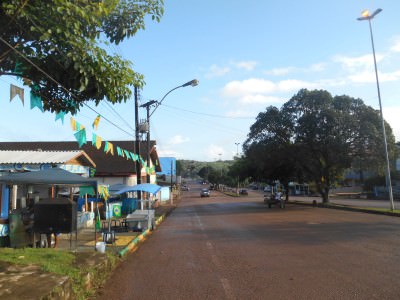
Walking down Avenida Barao do Rio Branco towards the Oyapock River that separates Brazil from French Guyana.
There is another monument on the way down, just in front of the river. It has a Brazil flag flying at the top of it. After checking that out, turn right and you will be asked by the locals if you are heading to French Guyana (or France) and they will get you sorted into a boat.
In Brazil, they use Reals, in French Guyana they use Euros. If you need to change your Reals into Euros then there is a change place along the riverside. We already had some but needed 20 Euro notes swapped for 5s.
The boat to French Guyana costs 5Euros per person, as of June 2014. You pay in cash, no booking needing and there is unlikely to be anyone else on your boat. Walk down the jetty and board the boat.
Crossing the Oyapock River from Brazil to French Guyana
The boat crossing on the Oyapock River from Brazil to French Guyana is memorable. This is no boring boat trip.
You are sailing on part of the water that makes up the huge Amazon basin and rainforest.
Savour the views, relax and wave to the other boats that you pass. Palm trees on either side and a huge border bridge (for vehicles crossing the border).
Your passports will not be checked on boarding this boat by the way.
Arrival into St. Georges de L’Oyapock, French Guyana
I can’t remember how long exactly the border crossing is, but I know it was short – definitely less than 25 minutes and you arrive at a small jetty.
You arrive in the village of St. Georges de L’Oyapock and you are now in French Guyana.
Immigration in French Guyana
On arrival, there is no immigration office in front of you, nor are you asked to go to immigration. You have to find it yourself and it wasn’t easy for us. We walked around aimlessly for a long time asking people who didn’t seem to know.
The most confusing thing was the lack of French-ness. We saw Brazil flags still, and when we said Bonjour to people they blanked us until we said Bon Dia, meaning this village has a mix of Brazilians and French and they don’t really play happy families.
Where is the Immigration Office in St. Georges de L’Oyapock, French Guyana?
This is a good question and hopefully my answer will clear things up for you. This is as precise as I can be. The streets are not well labeled nor are there ANY signs telling you where immigration is. French Guyana seems to be quite a relaxed and disorganised country, maybe there is no need for signage as they don’t get much tourism.
Off the boat, walk left up the street to the first corner. There will be a white building on the corner and take a right. There is a graveyard opposite this, keep walking straight until you reach a cross roads with two road signs (one on either side – pictured above). It’s less than 1 kilometre walk, probably around 6-700 metres but I can’t remember exactly. At this crossroads, turn right and walk down that street.
On the left hand side a few buildings down you will see a kind of pink building – this is the Police building which doubles up as immigration and border control and is where you get your arrival stamp. The opening hours are from 8am to 12 noon and from 2pm to 6pm, so make sure you schedule your arrival around these times. We arrived on a Saturday and it was open.
None of the EU nationalities require a visa to visit French Guyana and quite a few other countries are exempt, check your own circumstances in advance please.
Getting a stamp in your passport is actually unnecessary, especially for EU passport holders. However I was in French Guyana to get a Suriname visa and felt it’s a good idea to get an entry stamp for this purpose and so that I have proof of arrival in the country.
My girlfriend is from Hong Kong, which is also visa exempt, but the security guy was not used to seeing many tourists, you could tell! He had to look up Hong Kong on his list to check the visa status of it.
After that we had our stamps and were now legally and officially in French Guyana. We were the only tourists/backpackers in Oiapoque, on the boat across and also in St. Georges de L’oyapock. It’s not a common route but it’s a cool bit of travelling to do.
Our next move was either to stay in St. Georges de L’oyapock or move on to another town or city. There is not a lot to do here, so we had a walk around and tried to find a car hire place. Currently car hire is not permitted in St. Georges de L’oyapock as the locals were very quick to tell us so this meant either hitch hike to Cayenne or get a shared mini-bus there. We rarely hitch hike so we decided on the mini-bus but we had to wait until enough locals came for it to be worth the trip. In the end after an hour or so of waiting, only 3 other locals arrived but we were off anyway, heading to the capital city of Cayenne. The bus ticket cost us 30 Euros in cash and has two points to get off at – Regina and Cayenne.
So hopefully that clears things up for you all on how to get from Brazil to French Guyana. My fellow travel blogger Justin over at Velvet Rocket also did this trip and has a cool report here.
Safe travels.

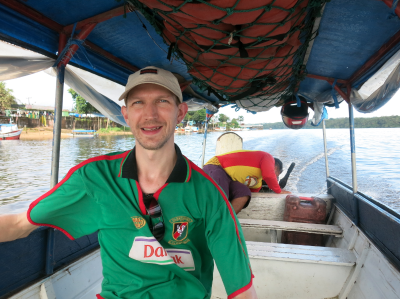
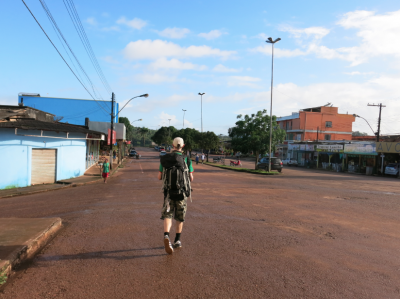
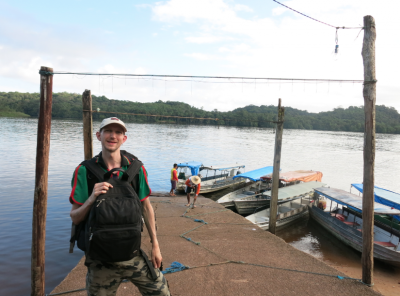
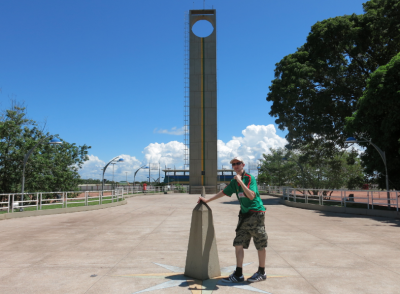
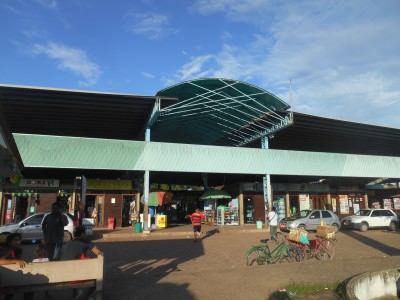
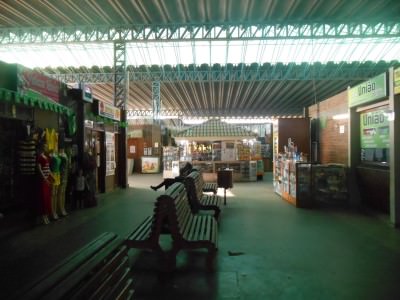
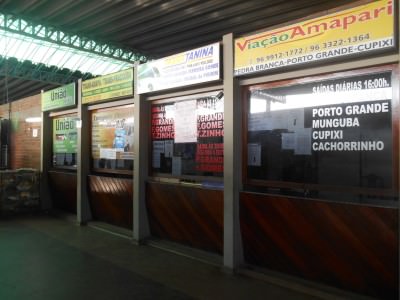
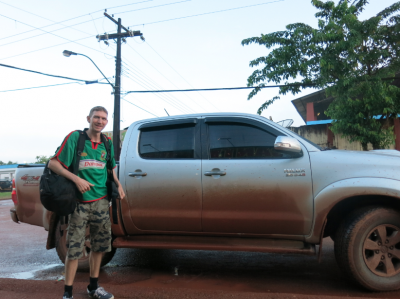
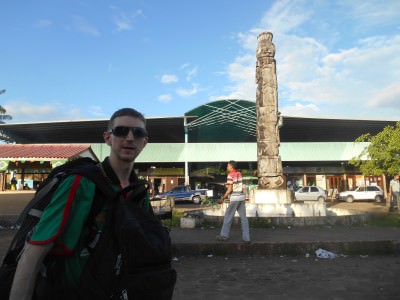
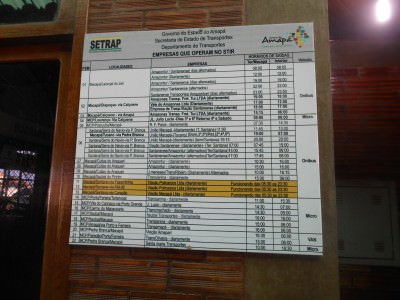
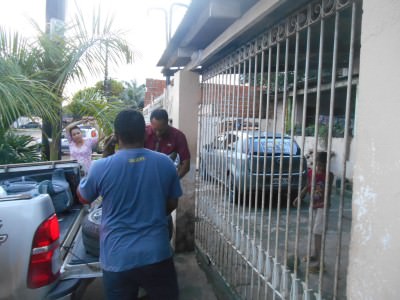



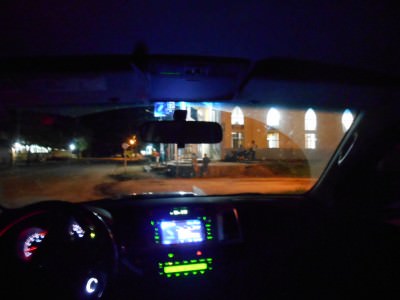
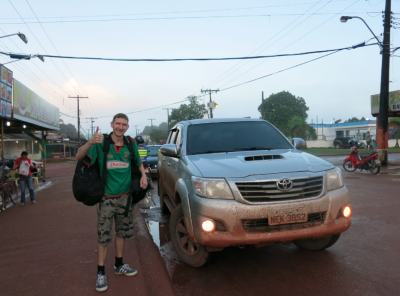

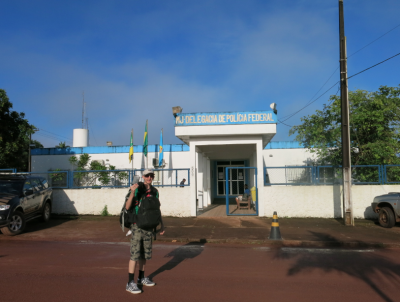
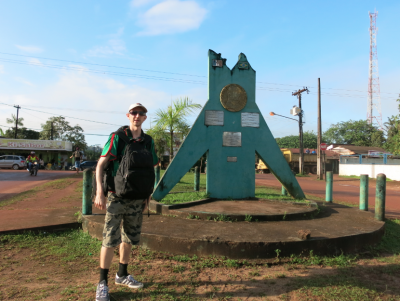
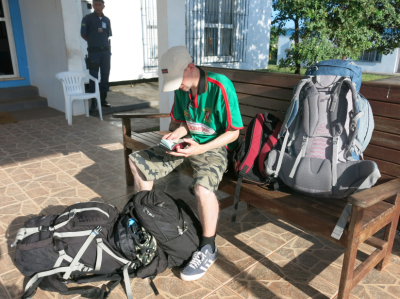
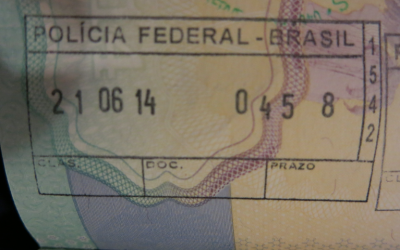
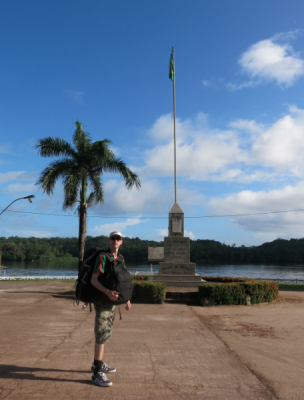
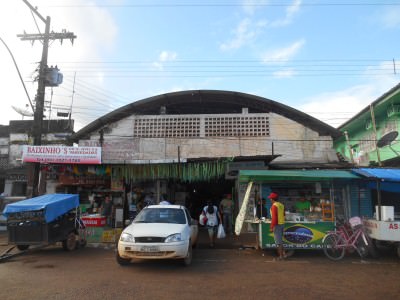


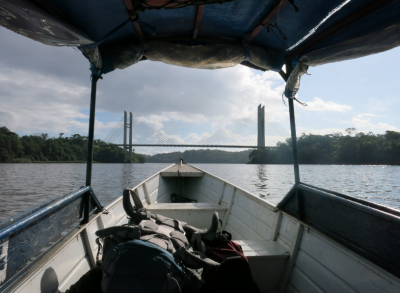
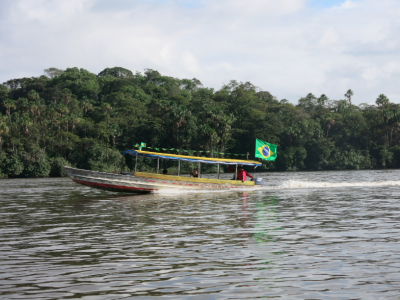
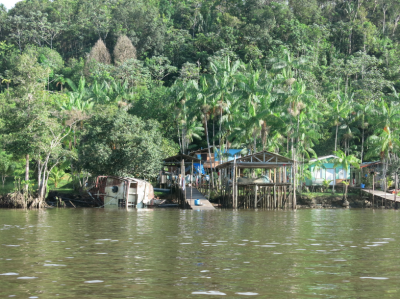
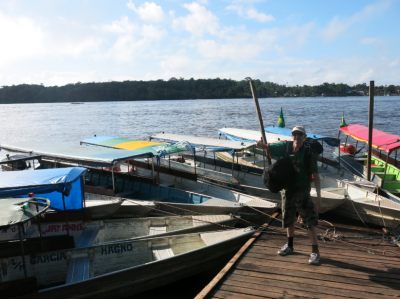
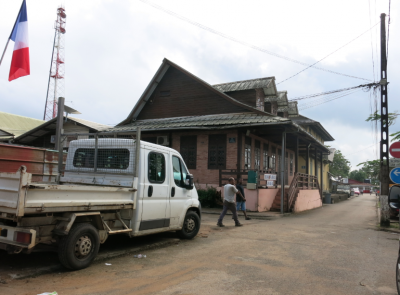

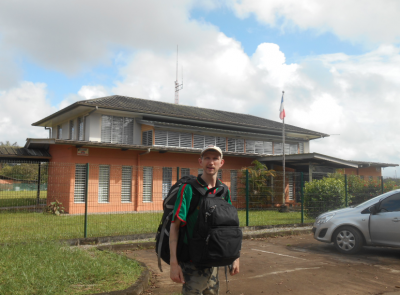
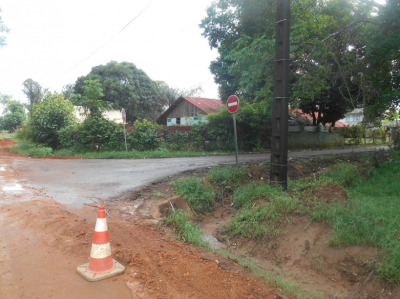

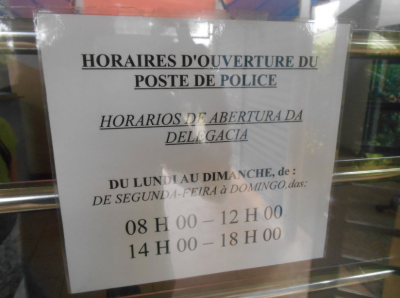
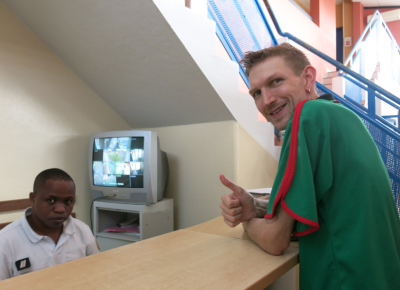

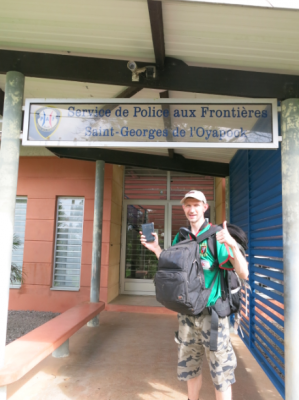

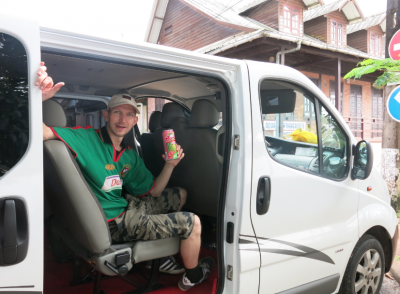
Hi Jonny,
Thanks a lot for the valuable info.
I am currently in Suriname and planning to go to Guyana soon.
When I left Brazil I did not get an exit stamp. The boat guy took me straight to Saint Georges and got my entry stamp into French Guiana. Everyone I talked to there said it’s fine, even though it’s not. Do you know how this issue could be resolved, since I’m planning to go back into Brazil.
Thanks!
Hi Sami, thanks for the comment. If you read the post, I mentioned in it that you need to get your exit stamp from Brazil at Oiapoque Police Station – it’s the only place that issues them as far as we could tell. You need to go there yourself and do it – don’t rely on others to help out. Flying into an airport will probably help resolve it as they are less likely to check that at the busy airports, and you can explain the situation easier to them, but I can’t be sure. Maybe use another passport (I carry 2 passports). Good luck with it! Jonny
This is very detailed, thank you so much!! Happy travels everyone.
Hi Jhully, thanks for the comment. Yes, I tried to be detailed so that other tourists can follow my route afterwards in the hope that it helps them out. Safe travels. Jonny
Hey Jonny!
I was looking for a guide to cross over to French Guiana from Brazil and I am so glad I found yours! This is an excellent read and I really appreciate you writing all of this. By the time I read this maybe things have changed a bit but it always good to have a base to go on when you’re venturing into uncharted territory!
Thanks again man, I will take a look on your other posts!
Hi William, Thanks for the comment and I am extremely sorry for the huge delay in replying to you. I have been going through problems with depression and wasn’t checking the comments or messages that much. I hope you had fun in Suriname, Brazil and French Guyana. Stay safe. Jonny